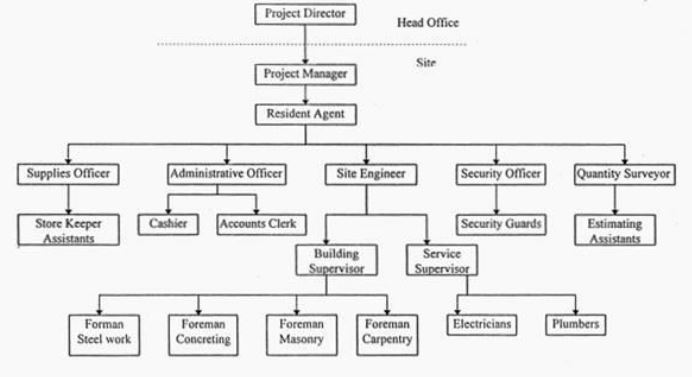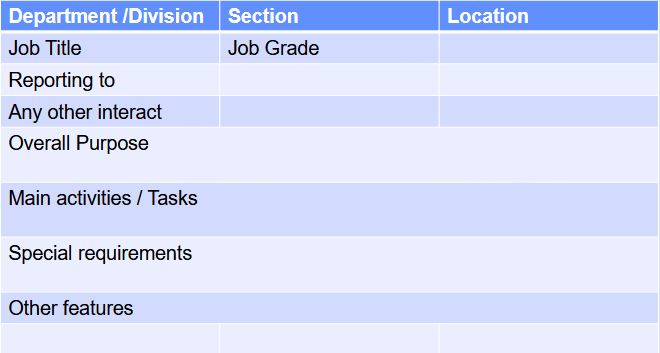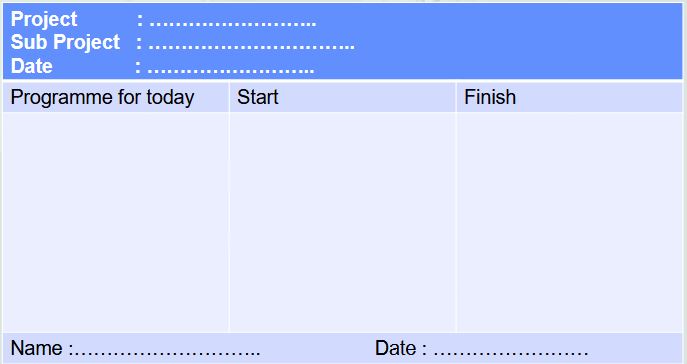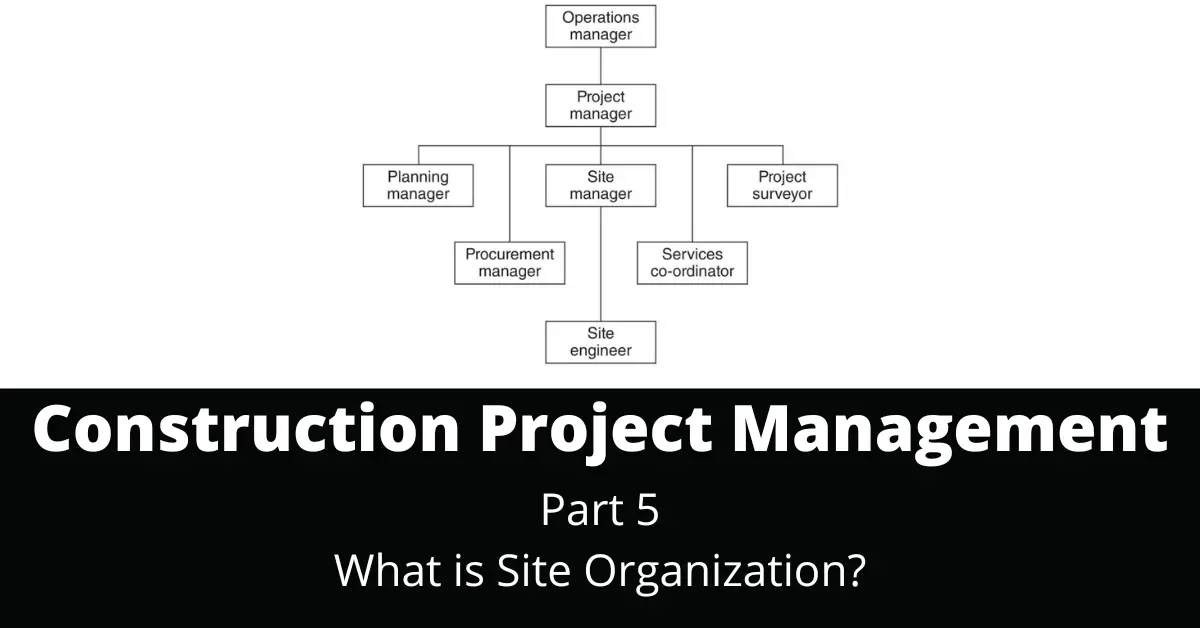This article will help you to understand the basics of site organization.
Table of Contents
What is an organization?
There are several definitions of an organization.
- “A body of people formed to achieve common objectives.”
- “The arrangement of work by which activities are divided among people.”
- “Groups of people to whom responsibilities, duties, and authority are allocated.”
“Organizations are meant to manage (plan, coordinate, and control) various activities and resources towards common objectives in a systematic way.”
Why do we need to understand about organizations?
- To persuade the right people to go in the direction of our own short, medium, and long-term objectives.
- To choose who will be participating in the construction sector.
- Look for ways to advance our own organizations in the right direction and to persuade the many other interfacing organizations to do the same.
Principles of Organizations
- Everyone is directly responsible for only one person.
- Authority should be granted in proportion to responsibilities.
- The span of control should be proportionate to the quality of the workforce, the variety of work, and the supervisor’s ability.
- Each individual’s specialized activities should be utilized to the greatest extent possible.
- The number of management layers should be kept to a minimum.
- There should be the appropriate level of centralization.
- Work should be distributed equitably.
Purposes of organization structures
- It organizes the function (work/tasks).
- It divides people (in the organization) into manageable units.
- It is intended to give a framework for organizing functions, work packages, and people into appropriate segments; effectively distributing tasks and responsibilities; establishing effective lines of reporting and communication; and emphasizing the limits of authority and accountability.
- As a result, the organization assists people in determining where they fit into organizational structures. Organizational structures, on the other hand, do not specify precise responsibilities or tasks. They are listed in job descriptions.
Organizational Structure types
- Line organizations
- Functional organizations
- Line and staff organizations
- Matrix organizations
Purpose of Organization Charts
- A quick glance reveals the organizational structure.
- The structure makes analysis and review easy.
- It is possible to indicate management ties.
- Competence and authority spheres are defined.
- Each supervisor/manager’s span of control is readily apparent.
- Communication channels are readily apparent.
- Organizational inconsistencies are readily apparent.

Typically, the following stages are included in the creation of an organization chart:
- Determine the objective of the organization (e.g., construction of a building).
- Determine the functions/roles arising from the objectives (e.g., planning, progress monitoring, etc.).
- Identify the tasks to be performed under each function or role.
- Establish the relationship between the functions and roles (setting up of lines of reporting or chain of command).
- Combine such functions and roles into a cohesive organizational structure, optimizing the usage of resources and inputs and controlling the quality of each product or output.
Different Site Management Structures
There are normal functional channels. Each functional manager is in charge of a part of a project, and the organization’s hierarchy is used to coordinate the parts.
A team of experts may be pulled from relevant functional areas to work together on just one project and functionally report only to the project manager.
In an intermediate approach, some type of matrix structure may be used.
Factors affecting the selection of the site management structure
- The complexity and the site layout
- The project’s budget
- Personnel capabilities
- The anticipated type of finish
The Construction Project Classification
- Type of construction; Buildings, housing schemes, highways, bridges, water supply schemes, etc.
- Value of project; up to Rs. 500,000- small, Rs. 5,000,000 to 15,000,000 – medium, Rs. 50,000,000 and above – large
- Duration of project; less than 6 months – short term, 6 months to one year – medium, more than one year – long term
- Location of project; closer to main city/head office, far away from main city – outstation
- Degree of specialization; e.g., Coast conservation project, water treatment plant etc.
Different registries and documents are used on the site.
Distribution of functions

Job Description

Site drawing register

Daily Task Sheet

Request / Approval to open new work site

- Inspection test plan: Preparation of formation, formwork, reinforcement, concrete
- Concreting approval request
- Daily attendance – casual workers
- Daily labor returns
- Daywork
- Daily site report
- Daily Hauling Project
- Weather records
- Request for confirmation of verbal instruction
- Request for confirmation of verbal variation order
- Data and Details for As-built Drawings
Records that are typically kept by the contractor’s site agent.
- Every communication between the contractor and the site engineer, including variation orders, permission forms, and so forth.
- Every official meeting’s minutes or notes.
- Dimensional records, such as dimension books, time sheets, and delivery notes.
- Day-to-day recordings.
- Interim statements accompanied by the necessary supporting documentation and interim certificates.
- Results of laboratory tests and other types of testing.
- Weather records
- Photographs of Progress
- Construction drawings
- Administrative records, including as vacation and sick leave requests, accident reports, and so on.
- Diaries of the sites
- Summary document containing information on the activity, accommodation, and the anticipated completion date.












